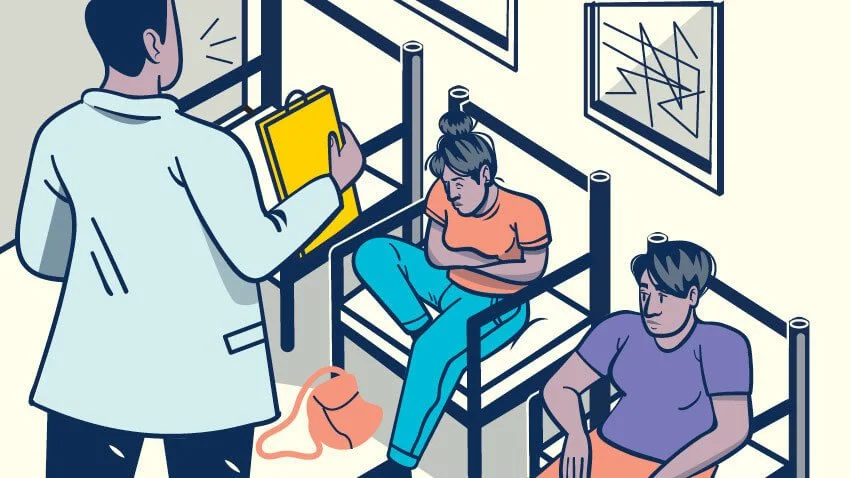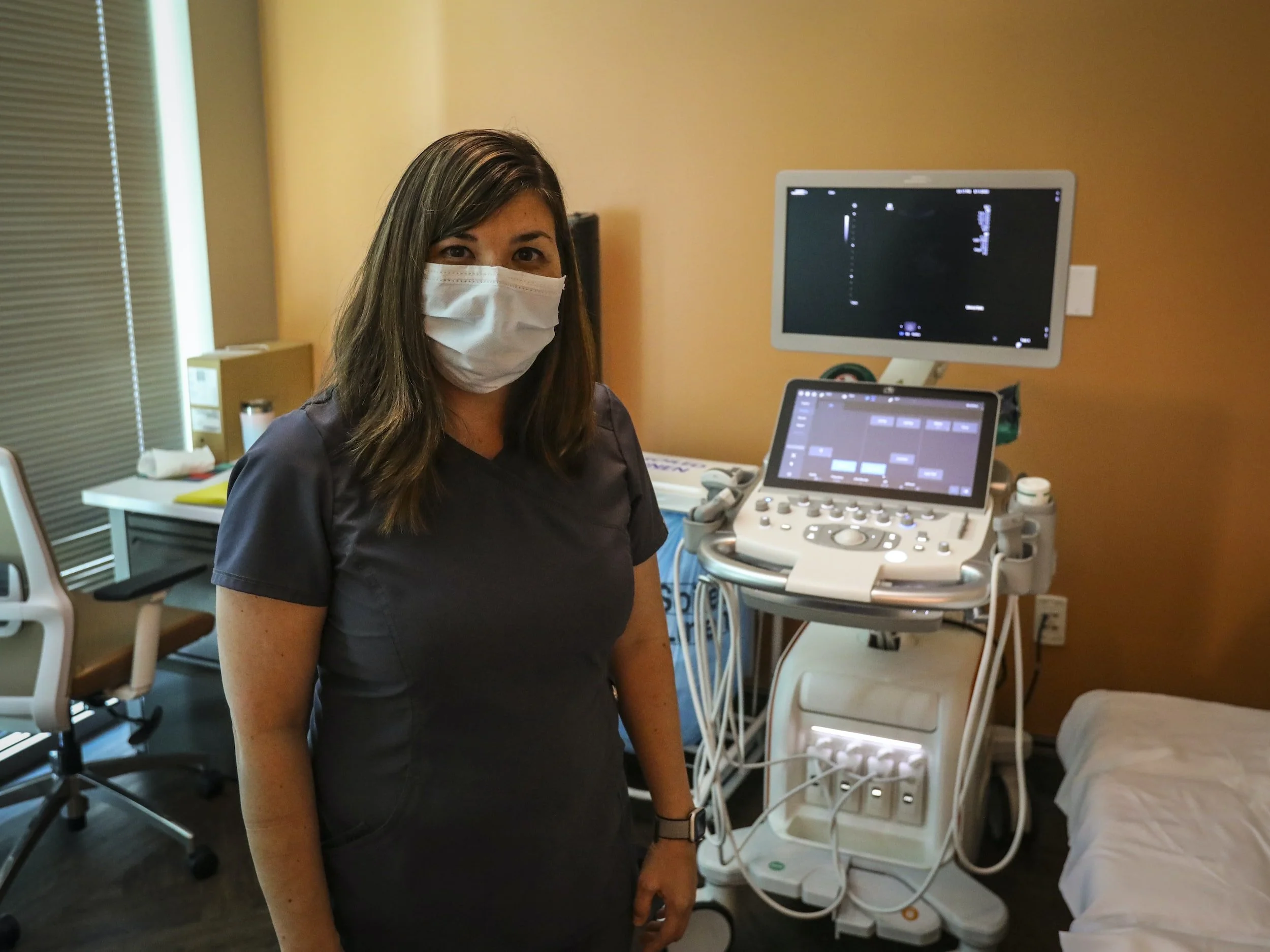Uterine Fibroid Embolization
What is uterine fibroid embolization?
Uterine fibroid embolization (UFE) is a minimally invasive procedure for treating fibroids.
Also referred to as ‘uterine artery embolization’ or ‘fibroid embolization’.
UFE shrinks the fibroids by blocking the blood supply to them, ultimately causing them to shrink and die off.
The entire fibroid treatment typically lasts less than one hour and is performed as an outpatient procedure.
Benefits of the procedure include:
No hospital stay
No major scarring
Shorter recovery compared to a hysterectomy
Requires no general anesthesia
What to expect during a UFE procedure.
Types of fibroids treated with uterine fibroid embolization include exophytic (located on the outer surface of the uterus and may project into the abdominal cavity), submucosal (located just underneath the inner lining of the uterus and can protrude into the uterine cavity), and intramural fibroids.
1. Light sedation
You’ll be given a light sedative to help you relax. During the procedure, you are given a sedative through a small IV, making you feel very comfortable. We also give you enough pain medicine beforehand, so you probably won’t remember anything while the procedure is going on.
2. Using ultrasound to find your fibroids
We will locate your fibroids using ultrasound and find what blood vessels are supplying these non-cancerous tumors.
3. Inserting the catheter
Once you are given a sedative to numb any pain, the fibroid doctor makes a tiny incision on the wrist, which provides the doctor with access to your artery. You won’t even need stitches after your procedure—just a bandaid. Using X-ray, the fibroid specialist passes a catheter to the artery that supplies blood to your uterus and guides it to the correct position.
4. Blocking the blood supply
When the doctor has reached the location of the fibroid(s), the embolic material (microscopic spheres) is injected through the catheter and into the artery that supplies the tumors, which blocks the blood flow, thus shrinking them.
Preparing for the Procedure
Describe the particles used to block the blood vessels leading to the fibroid(s).
The particles that we use for the embolization are little, small gelatin balls. They’re not toxic or harmful to you in any way.
Is the procedure covered by insurance?
Yes, insurances cover the procedure. At MIMIT Health, we do all the pre-authorization for you—we call the insurance companies. And we’ve never had one procedure declined.
Does it work on large uterine fibroids?
Yes, the procedure works on large fibroids and isn’t any less effective because of the size.
Our fibroid specialist, Dr. Chopra, has a lot of experience treating them.
How long should I expect to be off work?
It varies by the person, and it varies on how you tolerate pain. Most of our patients are back at work by a week. You compare that to open surgery or myomectomy where you spend a lot of time off work and in a lot of pain.
Uterine Fibroid Embolization: Success Rate and Patient Experiences
What are long-term side effects of uterine fibroid embolization?
Though UFE may cause immediate discomfort and side effects, such as cramping, nausea, and fever, studies have shown that the vast majority of women experience long term relief from fibroid symptoms after the procedure.
It’s rare, but if somebody doesn’t take the antibiotics, they can get a mild infection or even a severe infection. But at MIMIT Health, we make sure we cover them with antibiotics, so in my experience these are all less than 1%.”
What is the success rate of uterine fibroid embolization?
A very high percentage of UFE’s are successful in treating patients. Over 95% of procedures are successful. The goal of treatment is to make you feel better, stop the bleeding or the pain, and bring it as close to normal.
Uterine fibroid embolization vs hysterectomy
The benefits of UFE over a hysterectomy are clear. First, UFE is a much less invasive procedure, so it carries fewer risks and shorter recovery times. Additionally, it allows women to preserve their uterus and avoid the potential hormonal side effects of a hysterectomy. Additionally, it allows women to still conceive if they choose to in the future. UFE provides a more manageable option that allows women to continue with their daily routines while still receiving the treatment they need.
UFE Recovery & Aftercare
-
Will they come back after having UFE?
“It is very, very unusual for them to come back. Occasionally, the uterus may get blood supply from an ovarian artery or some other artery. I rarely see that, and it’s very easy to do the embolization again if it ever does.”
-
Will I still menstruate after having UFE?
“Yes, you’ll have your period after the procedure.”
-
What kind of follow-up care is typical?
“So immediately after your procedure, we want you to come back to the office within a few days to make sure everything is okay. After that, we will follow-up with you periodically to make sure that everything is going well.”
-
How long does it take to recover from uterine fibroid embolization?
You should be feeling back to normal within two weeks, which is significantly faster than a hysterectomy recovery. During this time you’ll want to avoid certain activities like heavy lifting.
Beyond the Procedure
Can I get pregnant after UFE?
Yes you can. However, it’s important to know that fibroids can change your uterus, which can make it more difficult to become pregnant.
Fertility rate post-UFE is uncertain. However, one study found no differences between UFE and myomectomy (partial removal of uterus) in terms of future fertility and success rate of getting pregnant.
According to MIMIT Health’s fibroid specialists, UFE is not designed to make you pregnant, but if the fibroid was the cause of your not being pregnant and then that cause goes away, there is a chance you will get pregnant after the UFE. So we’ve had patients who get pregnant, but we can’t guarantee that because there’s no literature suggesting that UFE will then make you pregnant.










